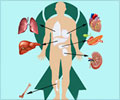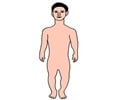The field of genetics has been undergoing a revolution with increasing importance being given to genetic mechanisms underlying common disorders and a huge amount of resources allocated to research in specific genetic disorders.
The field of genetics has been undergoing a revolution with increasing importance being given to genetic mechanisms underlying common disorders and a huge amount of resources allocated to research in specific genetic disorders.
This has not only added motivation to scientists working in the field of genetics but also helped us replace the existing knowledge with those acquired new. One such breakthrough has been the successful attempts of transplanting human chromosome into animal models, more specifically, chromosome 21 into mice.The presence of an extra copy of the 21st chromosome is responsible for Down syndrome, one of the most common autosomal chromosomal disorder. This move is anticipated to transform medical research into genetic causes of the disease.
Down's syndrome occurs in one in about every 800 live births and is also seen in a higher percentage of stillbirths and miscarriages. The chances of having a Down's syndrome baby increase as a woman ages. People with the disorder typically are of short stature and have undersized heads, downward-sloping eyes and mild to severe mental disabilities.
In addition to Down's syndrome, chromosome 21 is also linked to early-onset Alzheimer's disease, certain types of leukaemia, a form of manic depression and congenital heart disease.
With experiments such as this gathering momentum in the field of genetics, the successful treatment of genetic disorders seems a reachable goal in the future.









